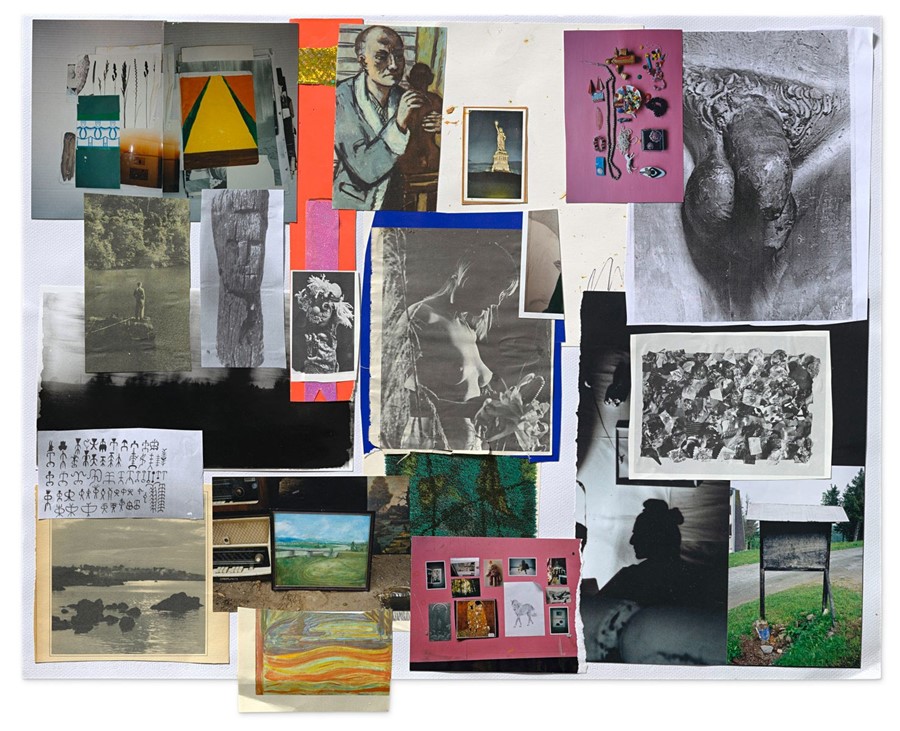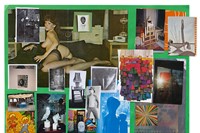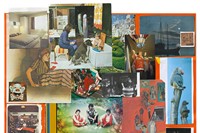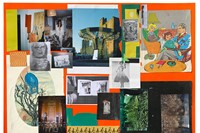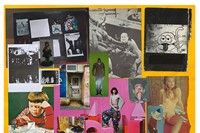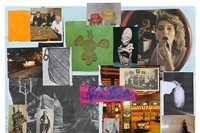The artist's new Berlin show displays 20 years worth of archive material in the form of 200 collages, nimbly assembled by his "greedy hands"
As an artist, you’d think few things would be more exposing than laying out 20 years worth of source material for your viewers to see. For Copenhagen-based Tal R, however, whose new exhibition Garbage Man does exactly that, it’s almost a form of therapy. “It’s a library!” he says of the ever expanding archive of imagery he has acquired over the years, and which he condensed down into a series of some 200 collages for the show. “I never want to touch it again, I want to put it behind me.”
The pieces combine an eclectic and indiscriminate collection of cut-outs – from the carved contours of a penis on a classical statue, to a cartoon ship that might belong on a child’s cereal box – and unsurprisingly, it makes for very entertaining viewing. For Tal R, whose practice is often concerned with the seemingly naïve and childlike, it’s an opportunity to start afresh. Here he tells AnOther why the most important investment an artist can make is in their failure, and why the illusion of reinventing one's self is like "peeing in your pants."
On his 'greedy hand'…
"I had a mountain! These images were lying in a small mountain in the studio. When I went from one studio to another I would be carrying this mountain around, and I was really looking for an opportunity to get rid of it. Because, you know, I have a very greedy hand that picks up stuff. Kind of like with kids, you have to educate them – you have to educate your hand to make it stop picking up stuff. I'll go to the doctor, and there’ll material in the waiting room for, let’s say, women who are pregnant and alone, explaining that they can go to a course where they make castings of their bellies, so they don’t feel completely alone with the pregnancy. There will be a brochure for that, and my greedy hand will pick it up, and cut out the image. These images had this electric attraction for me – I would pick them up, put them in my pocket and then add them to the mountain. So when I made these 200 collages, it was also a way of educating my hand and saying ‘okay, stop now. It’s over! It’s done! You have collected everything! Put the mountain behind you."

On the contemporary misunderstanding of archive imagery…
"I was looking around yesterday at all these collages, and I look at them now like an outsider. I find them really interesting, and funny and full of humour. I think if you grew up in the 70s you have an intimate relationship to a lot of them, but if you’re not from that era they’re like a remote slang, and that can be quite difficult to understand. Then they start to have another meaning from the original meaning, and I’m actually more interested in that misunderstanding.
If an image is from a certain era, sooner or later it becomes outdated. A lot of images produced in the 70s and 80s for children’s education, usually by the government, they all had this goodwill behind them. But 20 years later, they look like some weird perversion. The perversion was always there, but you know, it just became more obvious when that era ended. So somehow they become more interesting when they are taken out of their original context."
On 'kolbojnik', the Hebrew word for leftovers, and its role in his practice…
"Kolbojnik is the big soup! The first time that I ever displayed these images was in a catalogue for the first show that I ever did in London, and it was called A Load of Kolbojnik. So this is actually the first kolbojnik, the first soup. And now it’s the end of this soup, because I’m done. I never want to touch it again, I want to put it behind me. I think a lot of artists do stuff to put it behind them, and whenever you do, you feel alienation and you feel emptiness. It’s much more interesting to make art in that state of mind, than in a state of mind when you know everything and everything is familiar. So I put all this familiar stuff behind me, it’s over. It doesn’t belong to me. I even look at it as an alien now."

On ridding himself of his source material in order to reinvent herself…
"Don’t you ever have the feeling that you would like to be somebody else? To escape yourself? It’s always an illusion, but it’s like peeing in your pants – it’s warm for a while, at least, the dream of putting things behind you, being somebody else."
On the importance of failure…
"I spent nine years as a teacher of art in Düsseldorf, and I wanted to write over the door or the arts school: “invest in losing”. I think that’s such a great way of saying it. As an artist, if you only work in what you know, in what’s predictable, you’re never going to make anything interesting. I think it’s not only in art, I think science is the same – if you want to get into areas that are unknown and interesting, you have to kind of invest in your own failure."
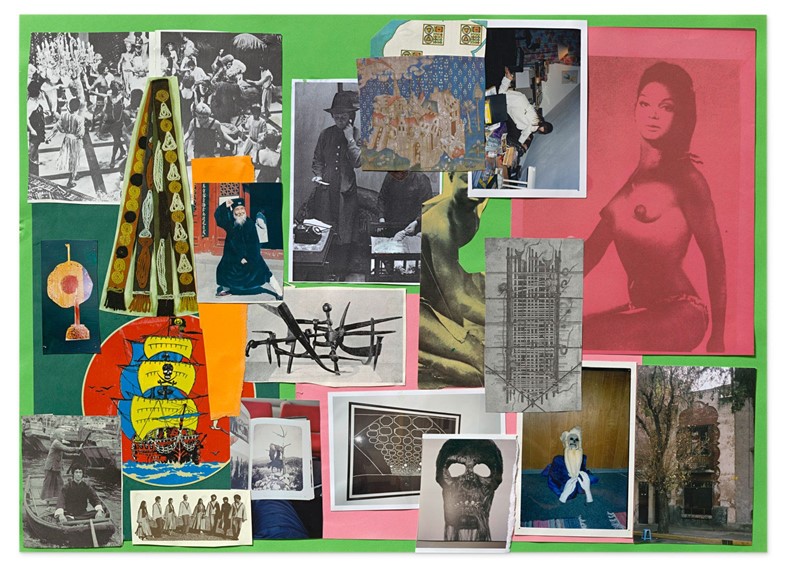
Tal R: Garbage Man runs until April 23, 2016 at Contemporary Fine Arts, Berlin.
